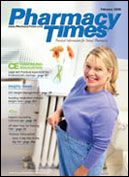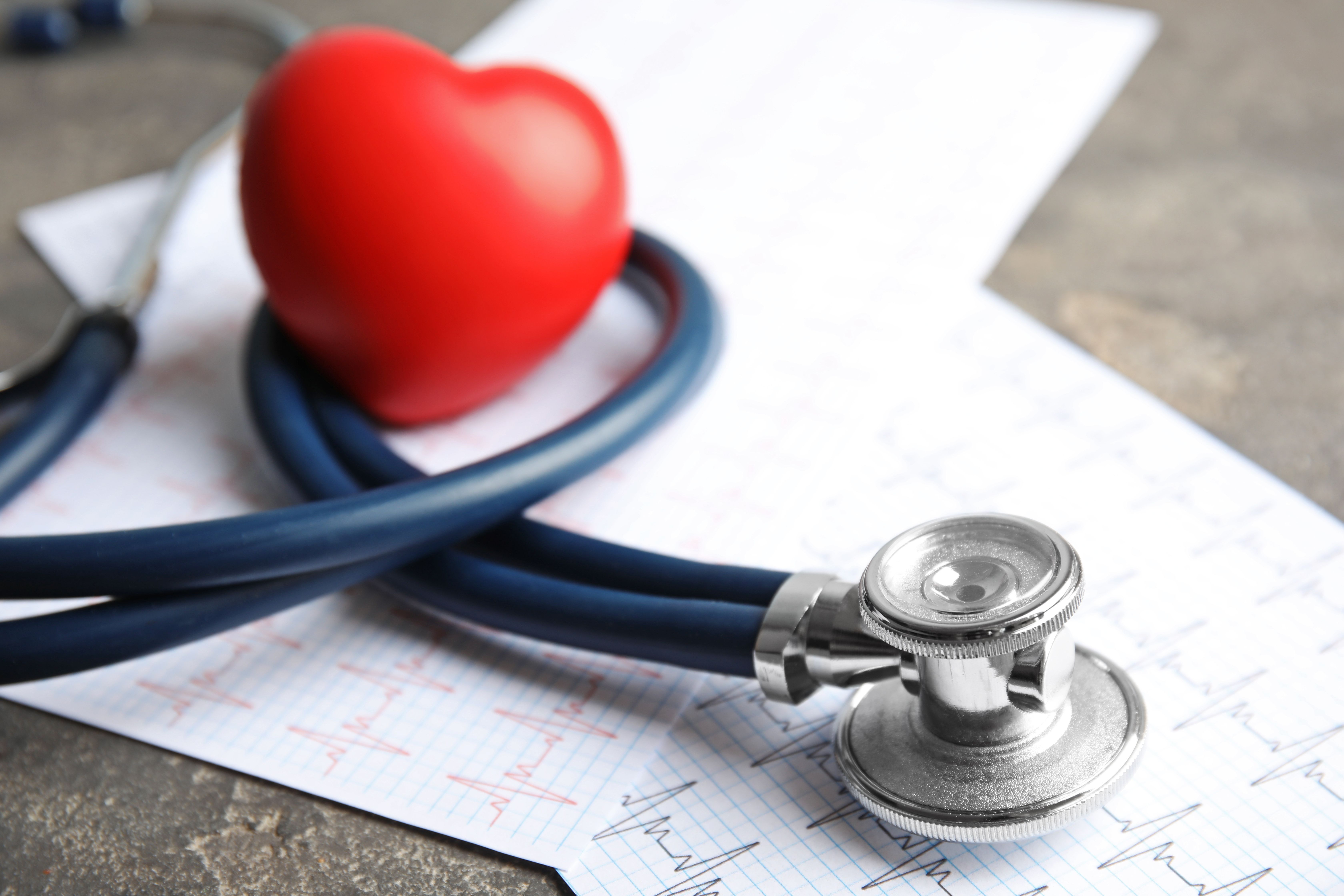Publication
Article
Pharmacy Times
Chronic Care Focus: Important Considerations for Managing Essential Hypertension
Author(s):
Lifestyle modifications are usually the first defense against hypertension; however, various pharmacologic options exist.
Dr. Pham is a Pharmacy PracticeResident at UCLA Medical Center inLos Angeles, California.
Hypertension affects approximately60 million adults in theUnited States and is one of themost common chronic reasons for physicianoffice visits.1 Data from the NationalHealth and Nutrition Examination Surveycensus bureau show that only 34% ofpatients with hypertension have adequateblood-pressure (BP) control2; theresult is that hypertensive emergenciespresent in roughly 27.5% of emergencyroom visits.3 Long-term effects of hypertensionalso are significant risk factorsfor hospitalization.4-6
Essential hypertension is the termused for elevated BP of unknown origin.These elevations have been classifiedinto stages, according to the most recentreport of the Joint National Committeeon Prevention, Detection, Evaluation, andTreatment of High Blood Pressure (JNC7), based on the average of ≥2 properlymeasured BP readings on separatehealth care visits (Table).2
Improper management of hypertensionis a major risk factor for cardiovasculardisease (CVD), such as left ventricularhypertrophy, angina, myocardialinfarction, and heart failure,4-6 and canlead to other end-organ damage, such asstroke, retinopathy, chronic kidney disease,and peripheral arterial disease.Benefits of treating hypertension withmedication have been demonstrated innumerous clinical trials.7,8
Patient Evaluation
Thorough patient evaluation for essentialhypertension is key2 and should beginwith a complete history to assess thecourse of BP levels, the extent of organdamage, the presence of other risk factorsfor CVD (eg, obesity, dyslipidemia,diabetes mellitus, cigarette smoking),and other comorbidities. Other evaluationrecommendations include a physicalexamination, observing signs of organdamage; laboratory tests, including urinalysis,blood glucose, hematocrit andlipid panel, serum potassium, creatinine,and calcium; an electrocardiogram, monitoringcardiac activity; and accuratevital-sign assessment, determining BP,heart rate, and respiratory rate.
Table

Nonpharmacologic Treatment
Treating essential hypertension usuallybegins with lifestyle modifications.2 In thePREMIER trial, sponsored by the NationalHeart, Lung, and Blood Institute, patientsexperienced a lower prevalence ofhypertension and required less use ofantihypertensive medications after 18months of nonpharmacologic therapy.9Health care providers should outline aspecific plan per patient.
A reduced-sodium diet (6 g of saltdaily) has been shown to lower systolicBP (SBP) by about 2 to 8 mm Hg.Weightreduction (maintaining a healthy bodyweight index of 18.5-24.9 kg/m2) canlead to SBP reductions of roughly 5 to 20mm Hg. Patients are encouraged toadopt the eating plan, Dietary Approachesto Stop Hypertension (DASH diet),which is rich in fruits, vegetables, andlow-fat dairy products, with reduced saturatedand total fat, and can lower SBPby 8 to 14 mm Hg.
Aerobic physical activity at least 30minutes per day, most days of the week,can reduce SBP by 4 to 9 mm Hg. Moderationof alcohol consumption (men <2drinks daily, women <1 drink daily) alsocan slightly reduce SBP. All patients areencouraged to stop smoking.2
Pharmacologic Treatment
Pharmacologic treatment of essentialhypertension is usually initiated forpatients who do not achieve their BPgoals (BP <140/90 mm Hg or BP <130/80mm Hg in patients with diabetes orchronic kidney disease) through lifestylemodifications.2 Initial drug choice isbased on the presence or absence ofother compelling factors. Based on outcomesfrom the Antihypertensive andLipid-Lowering Treatment to PreventHeart Attack Trial (ALLHAT), the JNC 7guidelines recommend a low-dose thiazidediuretic for patients with uncomplicatedhypertension.10 Results haveshown benefits of diuretics in patientswith heart failure, previous myocardialinfarction (spironolactone), and diabetes,and for stroke prevention.
If BP goals are not reached with a thiazidediuretic, the addition of anangiotensin-converting enzyme (ACE)inhibitor, angiotensin II receptor blocker(ARB), beta-blocker (BB), calcium channelblocker (CCB), or a combination of theseagents should be considered. Patientsinitially diagnosed with stage 2 hypertensionmay need to start with a combinationof the above antihypertensives (usuallydiuretic + ACE inhibitor for synergy).11
Although thiazide diuretics are consideredthe initial drug choice for uncomplicatedhypertension, specific compellingindications are used for other antihypertensives.ACE inhibitors are consideredfirst-line options for patients who haveheart failure, previous myocardial infarctions,stroke, diabetes, systolic dysfunction,or chronic kidney disease.2 This isdue to the suggested cardiac and renalprotective effects of inhibiting the reninangiotensin-aldosterone system. ARBsare likely to have similar indications andare usually substituted if patients do nottolerate an ACE inhibitor (eg, cough).

Combination therapy with an ACEinhibitor and an ARB appears to be beneficialin patients with heart failure andchronic renal failure.12 The newly approveddirect renin inhibitor (aliskiren)also may be useful when used alone or incombination with other antihypertensiveagents.13 All medications that block therenin-angiotensin system should be usedwith extreme caution in the 1st trimester(category C) and are contraindicated inthe 2nd and 3rd trimesters (category D)of pregnancy due to fetal injury.14
BBs are primarily indicated for essentialhypertension in patients with previousmyocardial infarction, stable heartfailure, and diabetes. BBs also are usefulfor patients with atrial fibrillation, angina,and migraine headaches. Although noabsolute indications for CCBs exist, theycan offer added benefit for patients withatrial fibrillation or angina and may bepreferred in patients with chronic obstructiveairway disease.
The combination of different classes ofantihypertensive medications often isneeded to adequately control BP. A BP>20/10-mm Hg above goal is generally anindication to start an additional medication.2 Diuretics are thought to have a synergisticeffect with ACE inhibitors, ARBs,and BBs by minimizing volume expansion.Combinations can be derived basedon this or other factors (eg, cost, patienttolerability). Some combinations shouldbe used with caution because of possiblepotentiating side effects (ACE inhibitor +ARB can increase serum potassium levels;BB + CCB can potentiate heart block).
Although age and race are not consideredcompelling indications, they can beused to predict response from hypertensivepatients. Young and white patientstend to respond better to ACE inhibitors(and probably ARBs) and BBs.15 Theseresponses may be related to theoreticalelevated baseline plasma renin activitylevels in these patients.16 Elderly andblack patients have been shown torespond better to diuretics and CCBs.17
Alpha-blockers (doxazosin, terazosin)are not considered initial treatmentoptions in essential hypertension unlessthe patient has concomitant benign prostatichypertrophy. A central alpha-agonist(clonidine) is used primarily forrefractory hypertension that is not otherwisecontrolled. The transdermal formulationmay be an attractive option forpatients who do not tolerate pills. Directarterial vasodilators (hydralazine, minoxidil)also are considered 2nd- or 3rd-lineagents. Nitrates (isosorbide mononitrateand dinitrate) are usually used in patientswho are resistant to other antihypertensivetherapy; however, a nitrate-free period(12 hours daily) is necessary to avoidtolerance.
Formulary Considerations
With regard to essential hypertensionin a health system, it is strongly recommendedthat each institution considerJNC 7 guidelines when adding medicationclasses to its formulary. Diuretics(thiazide and loop), BBs (specific ß1 withoutintrinsic sympathomimetic activity),ACE inhibitors (short- and long-acting),ARBs, and CCBs (dihydropyridines andnondihydropyridines) are all standardantihypertensive medications thatshould be part of a complete health systemdrug formulary. Agents used forrefractory hypertension (eg, clonidine,hydralazine, nitrates) should be availablefor resistant patients.
References
- Fields LE, Burt VL, Cutler JA, et al. The burden of adult hypertension in the United States 1999 to 2000: a rising tide. Hypertension. 2004;44:398-404.
- Chobanian AV, Bakris GL, Black HR, et al. The Seventh Report of the Joint National Committee on Prevention, Detection, Evaluation, and Treatment of High Blood Pressure: The JNC 7 Report. JAMA. 2003;289:2560-2572.
- Kitiyakara C, Guzman NJ. Malignant hypertension and hypertensive emergencies. J Am Soc Nephrol. 1998;9:133-142.
- Psaty BM, Furberg CD, Kuller LH, et al. Association between blood pressure level and the risk of myocardial infarction, stroke, and total mortality: the cardiovascular health study. Arch Intern Med. 2001;161:1183-1192.
- Levy D, Larson MG, Vasan RS, Kannel WB, Ho KK. The progression from hypertension to congestive heart failure. JAMA. 1996;275:1557-1562.
- Coresh J, Wei L, McQuillan G, et al. Prevalence of high blood pressure and elevated serum creatinine level in the United States: findings from the third National Health and Nutrition Examination Study (1998-1994). Arch Intern Med. 2001;161:1207-1216.
- Neal B, MacMahon S, Chapman N; Blood Pressure Lowering Treatment Trialists' Collaboration. Effects of ACE inhibitors, calcium antagonists, and other blood pressure lowering drugs. Lancet. 2000;356:1955-1964.
- Wong ND, Thakral G, Franklin SS, et al. Preventing heart disease by controlling hypertension: impact of hypertensive subtype, stage, age, and sex. Am Heart J. 2003;145:888-895.
- Appel LJ, Champagne CM, Harsha DW, et al. Effects of comprehensive lifestyle modification on blood pressure control: main results of the PREMIER clinical trial. JAMA. 2003;289:2083-2093.
- Major outcomes in high-risk hypertensive patients randomized to angiotensin-converting enzyme inhibitor or calcium channel blocker vs. diuretic: The Antihypertensive and Lipid-Lowering Treatment to Prevent Heart Attack Trial (ALLHAT). JAMA. 2002;288:2981-2997.
- Neutel JM, Black HR, Weber MA. Combination therapy with diuretics: an evolution of understanding. Am J Med. 1996;101:61S-70S.
- Lip GY, Frison L, Grind M. Angiotensin converting enzyme inhibitor and angiotensin receptor blockade use in relation to outcomes in anticoagulated patients with atrial fibrillation. J Intern Med. 2007;261:577-586.
- Tekturna [package insert]. East Hanover, NJ: Novartis; 2007.
- United States Food and Drug Administration. Center for Drug Evaluation and Research. www.fda.gov/cder/index.html. Accessed January 18, 2008.
- Dickerson JEC, Hingorani AD, Ashby MJ, Palmer CR, Brown MJ. Optimization of antihypertensive treatment by crossover rotation of four major classes. Lancet. 1999;353:2008-2013.
- Blaufox MD, Lee HB, Davis B, et al. Renin predicts the blood pressure response to nonpharmacologic and pharmacologic therapy. JAMA. 1992;267:1221-1225.
- Morgan TO, Anderson AI, MacInnis RJ. ACE inhibitors, beta-blockers, calcium blockers, and diuretics for the control of systolic hypertension. Am J Hypertens. 2001;14:241-247







